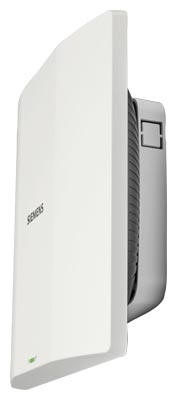1. EXECUTIVE SUMMARY
- CVSS v3 8.4
- ATTENTION: Exploitable from adjacent network/low attack complexity
- Vendor: Siemens
- Equipment: SCALANCE W1750D
- Vulnerabilities: Improper Input Validation
2. RISK EVALUATION
Successful exploitation of this vulnerability could allow an attacker to disclose sensitive information or steal the unsuspecting user’s session.
3. TECHNICAL DETAILS
3.1 AFFECTED PRODUCTS
The following products from Siemens are affected:
- SCALANCE W1750D (JP) (6GK5750-2HX01-1AD0): All versions
- SCALANCE W1750D (ROW) (6GK5750-2HX01-1AA0): All versions
- SCALANCE W1750D (USA) (6GK5750-2HX01-1AB0): All versions
3.2 VULNERABILITY OVERVIEW
3.2.1 IMPROPER INPUT VALIDATION CWE-20
The IEEE 802.11 specifications through 802.11ax allow physically proximate attackers to intercept (possibly cleartext) target-destined frames by spoofing a target’s MAC address, sending Power Save frames to the access point, and then sending other frames to the access point (e.g., authentication frames or re-association frames) to remove the target’s original security context. This interception occurs because the specifications do not require an access point to purge its’ transmit queue before removing a client’s pairwise encryption key.
CVE-2022-47522 has been assigned to this vulnerability. A CVSS v3 base score of 8.4 has been assigned. the CVSS vector string is (CVSS:3.1/AV:A/AC:L/PR:L/UI:R/S:C/C:H/I:H/A:H).
3.3 BACKGROUND
- CRITICAL INFRASTRUCTURE SECTORS: Multiple
- COUNTRIES/AREAS DEPLOYED: Worldwide
- COMPANY HEADQUARTERS LOCATION: Germany
3.4 RESEARCHER
Siemens reported this vulnerability to CISA.
4. MITIGATIONS
Siemens has identified the following specific workarounds and mitigations users can apply to reduce risk:
As a general security measure, Siemens recommends protecting network access to devices with appropriate mechanisms. To operate the devices in a protected IT environment, Siemens recommends configuring the environment according to their Operational Guidelines for Industrial Security and following recommendations in the product manuals.
Additional information on industrial security by Siemens can be found on the Siemens Industrial Security website.
For further inquiries on security vulnerabilities in Siemens products, visit Siemens ProductCERT.
For more information, see the associated Siemens security advisory SSA-516174 in HTML and CSAF.
CISA recommends users take defensive measures to minimize the risk of exploitation of this vulnerability. Specifically, users should:
- Minimize network exposure for all control system devices and/or systems, and ensure they are not accessible from the Internet.
- Locate control system networks and remote devices behind firewalls and isolate them from business networks.
- When remote access is required, use secure methods, such as Virtual Private Networks (VPNs), recognizing VPNs may have vulnerabilities and should be updated to the most current version available. Also recognize VPN is only as secure as its connected devices.
CISA reminds organizations to perform proper impact analysis and risk assessment prior to deploying defensive measures.
CISA also provides a section for control systems security recommended practices on the ICS webpage at cisa.gov/ics. Several CISA products detailing cyber defense best practices are available for reading and download, including Improving Industrial Control Systems Cybersecurity with Defense-in-Depth Strategies.
Additional mitigation guidance and recommended practices are publicly available on the ICS webpage at cisa.gov/ics in the technical information paper, ICS-TIP-12-146-01B–Targeted Cyber Intrusion Detection and Mitigation Strategies.
Source:
https://www.cisa.gov/news-events/ics-advisories/icsa-23-131-02


Stay connected